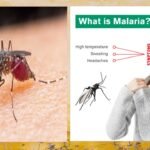Foodborne Illnesses: Prevention and Treatment
Foodborne illnesses, commonly known as food poisoning, are a significant health concern worldwide. Whether it’s a simple upset stomach or a severe condition requiring hospitalization, contaminated food can have serious health consequences. In this blog, we’ll explore what foodborne illnesses are, their common causes, symptoms, prevention strategies, and treatment options.
What Are Foodborne Illnesses?
Foodborne illnesses occur when people consume food or beverages contaminated with harmful microorganisms (bacteria, viruses, parasites), toxins, or chemicals. Contamination can happen at any stage, from production and processing to preparation and serving.

Common Causes of Foodborne Illnesses
Foodborne illnesses can be caused by various factors. Here are some common causes:
Bacterial Contamination
- Salmonella: Found in raw poultry, eggs, and sometimes in produce.
- E. coli: Found in undercooked ground beef, raw produce, and contaminated water.
- Listeria: Found in soft cheeses, hot dogs, and deli meats.
- Campylobacter: Found in raw poultry and unpasteurized dairy products.
Viral Contamination
- Norovirus: Highly contagious and can be spread through contaminated food, water, and surfaces.
- Rotavirus: Can be spread through contaminated food and water.
Parasitic Contamination
- Toxoplasma: Found in undercooked meat, especially pork and wild game, and contaminated produce.
- Giardia: Found in contaminated water and produce.
Other Causes
- Cross-contamination: Transferring bacteria from one food to another through utensils, cutting boards, or hands.
- Improper food handling: Not storing food at the correct temperature, not cooking food to a safe internal temperature, or not refrigerating perishable foods promptly.
- Poor personal hygiene: Not washing hands frequently or thoroughly, especially after handling raw meat, poultry, or seafood.
Prevention
- Handle food safely: Wash hands, utensils, and surfaces frequently.
- Cook food thoroughly: Cook food to the recommended internal temperature.
- Store food properly: Store food at the correct temperature and separate raw meat, poultry, and seafood from ready-to-eat foods.
- Avoid cross-contamination: Prevent cross-contamination by separating foods and utensils.
By understanding the common causes of foodborne illnesses, you can take steps to prevent them and keep your food safe to eat.
————————————————————————
Symptoms of Foodborne Illnesses
Symptoms usually appear within hours or days after consuming contaminated food and can include:
- Nausea and vomiting
- Diarrhea (sometimes bloody)
- Stomach cramps and abdominal pain
- Fever and chills
- Headache and muscle aches
- Fatigue and dehydration
Severe cases can lead to long-term health problems or even death, especially in vulnerable populations like infants, elderly, pregnant women, and those with weakened immune systems.
Prevention of Foodborne Illnesses
Preventing foodborne illnesses requires attention to hygiene, proper food handling, cooking, and storage. Here are some essential tips:
1. Practice Good Personal Hygiene
- Wash hands thoroughly with soap and water before handling food.
- Avoid preparing food if you are sick.
- Use gloves when handling ready-to-eat foods.
2. Safe Food Handling
- Keep raw meat, poultry, and seafood separate from other foods.
- Use separate cutting boards for raw and cooked foods.
- Rinse fruits and vegetables under running water.
3. Cook Food Thoroughly
- Cook meat, poultry, eggs, and seafood to the right internal temperatures.
- Use a food thermometer to ensure proper cooking.
- Avoid consuming raw or undercooked eggs, seafood, or meat.
4. Proper Food Storage
- Refrigerate perishable foods within 2 hours (1 hour if the temperature is above 32°C).
- Store raw meats in sealed containers at the bottom of the refrigerator.
- Regularly check expiry dates and discard spoiled food.
5. Safe Water and Cleanliness
- Use safe and clean water for drinking and cooking.
- Wash kitchen surfaces, utensils, and appliances regularly.
- Sanitize cutting boards and countertops after preparing raw food.
Treatment of Foodborne Illnesses
Most foodborne illnesses are self-limiting and resolve within a few days. However, treatment focuses on symptom management and preventing dehydration.
1. Hydration
- Drink plenty of fluids (water, oral rehydration solutions, clear broths).
- Avoid caffeine and alcohol which can worsen dehydration.
2. Rest
- Get adequate rest to help the body recover faster.
3. Medications
- Over-the-counter medications like anti-diarrheal drugs (e.g., loperamide) may be used with caution.
- Antibiotics are prescribed in severe bacterial infections, but not for viral causes.
- Seek medical attention if symptoms are severe or prolonged.
4. Hospitalization
- In severe cases involving dehydration, bloody diarrhea, or high fever, hospitalization and intravenous fluids might be necessary.

High-Risk Groups and Extra Precautions
Certain groups are more vulnerable to severe foodborne illnesses:
- Infants and young children
- Elderly individuals
- Pregnant women
- Immunocompromised persons
Extra precautions include avoiding high-risk foods like raw shellfish, unpasteurized dairy, and deli meats unless heated thoroughly.

Conclusion
Foodborne illnesses are largely preventable with proper hygiene, safe food handling, and cooking practices. Being aware of common causes and symptoms can help in early diagnosis and effective treatment. Remember, “Clean, Separate, Cook, and Chill” are the golden rules for food safety. Stay informed, stay safe, and enjoy your meals without fear of foodborne diseases.
Frequently Asked Questions (FAQs)
Q1: How long does food poisoning last?
Food poisoning typically lasts from a few hours to several days, depending on the cause and severity.
Q2: When should I see a doctor for foodborne illness?
Seek medical help if you experience severe dehydration, persistent vomiting, high fever, bloody diarrhea, or symptoms lasting more than three days.
Q3: Can foodborne illnesses be fatal?
Yes, in severe cases, especially in high-risk groups, foodborne illnesses can lead to life-threatening complications.
Q4: Is it safe to reheat leftovers?
Yes, but ensure they are reheated to an internal temperature of at least 74°C (165°F) to kill harmful microorganisms.
*****************************************************************************************************
https://www.osha.gov/foodborne-disease
https://pram123.com/your-refrigerator-listeria-free-essential-safe-kitchen/
*****************************************************************************************************











